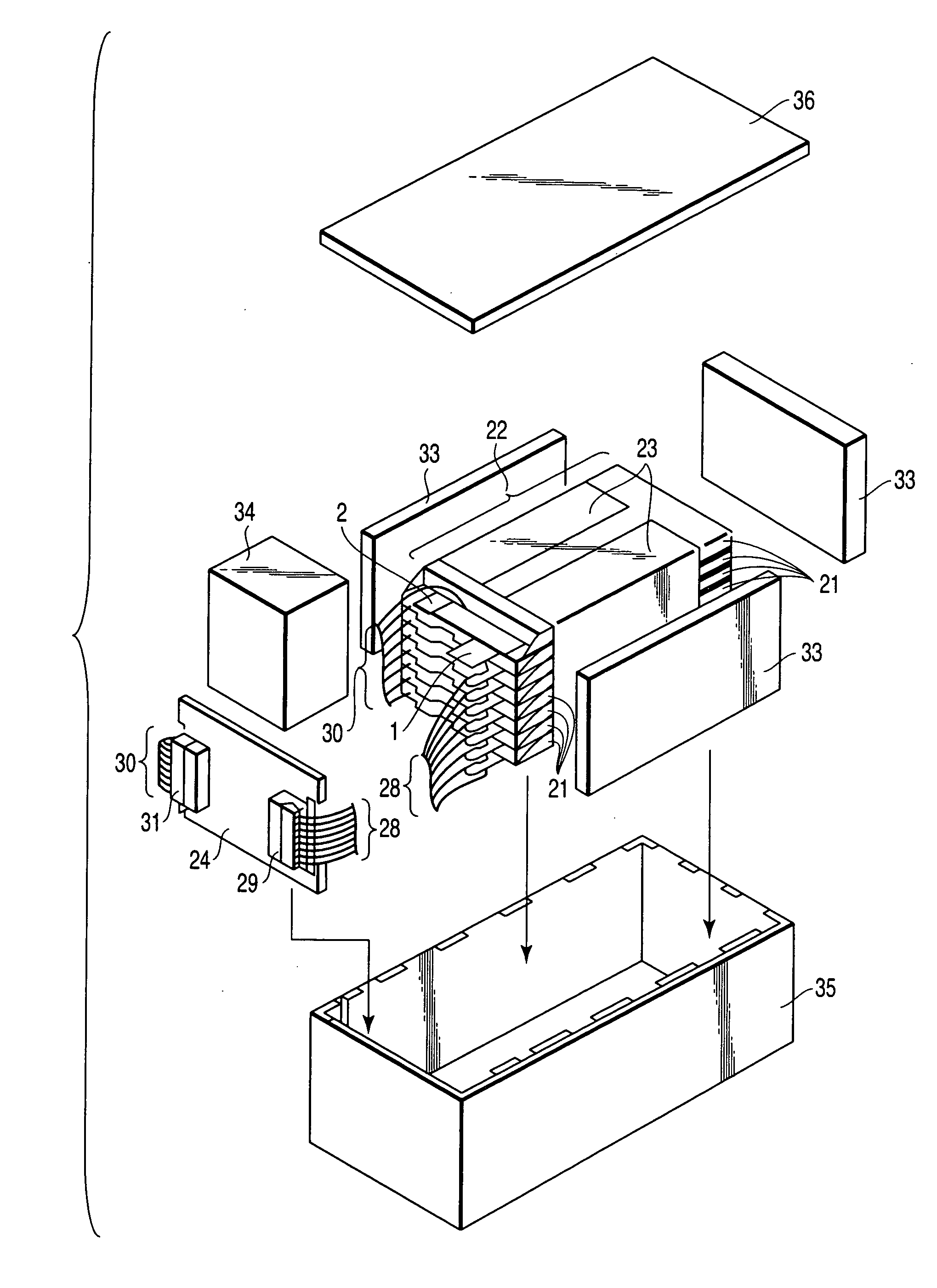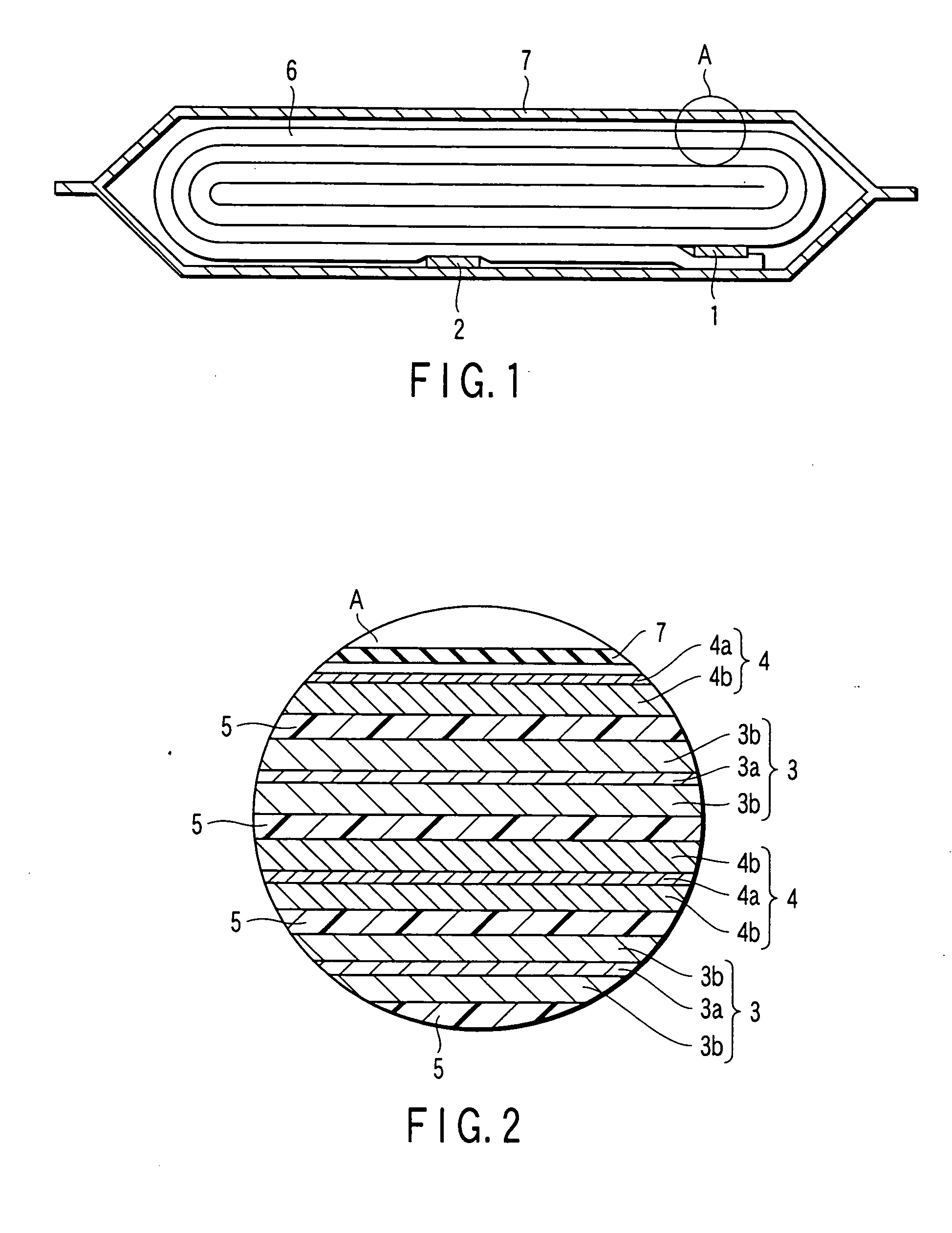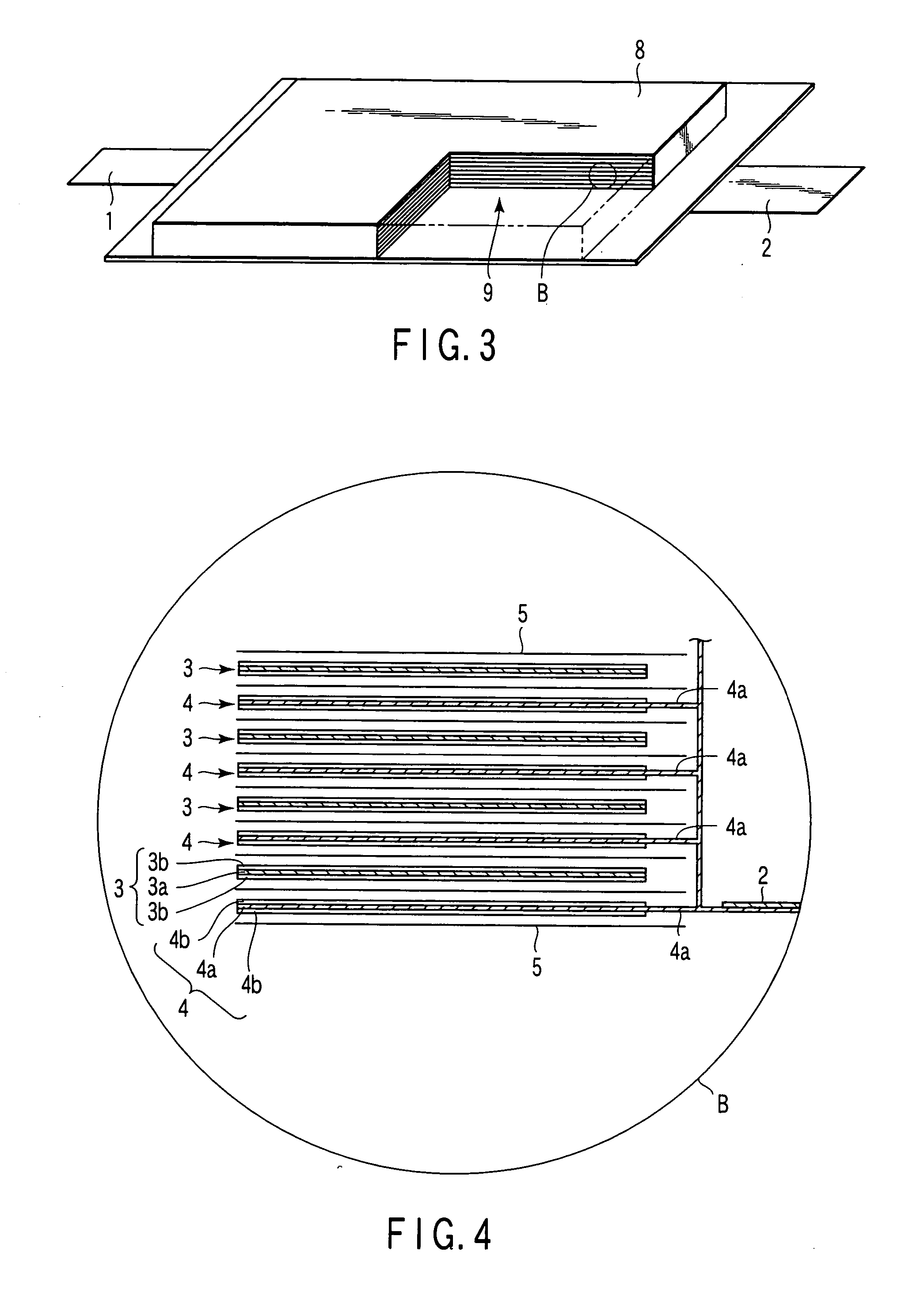Nonaqueous electrolyte battery, battery pack and vehicle
a technology of non-aqueous electrolyte and battery pack, which is applied in the direction of non-aqueous electrolyte cells, cell components, cell component details, etc., can solve the problem of not being able to obtain excellent charge-discharge cycle characteristics in secondary batteries, and achieve the effect of improving charge-discharge cycle characteristics
- Summary
- Abstract
- Description
- Claims
- Application Information
AI Technical Summary
Benefits of technology
Problems solved by technology
Method used
Image
Examples
example 1
[0163]
[0164] In the first step, a slurry was prepared by adding 90% by weight of a lithium-nickel-cobalt-manganese oxide (LiNi1 / 3Co1 / 3Mn1 / 3O2) powder used as a positive electrode active material, 5% by weight of acetylene black used as an electronic conductor, and 5% by weight of polyvinylidene fluoride (PVdF) used as a binder to N-methyl pyrrolidone (NMP). Then, both surfaces of a current collector formed of an aluminum foil having a thickness of 15 μm were coated with the slurry thus prepared, followed by drying and, then, pressing the current collector coated with the slurry so as to obtain a positive electrode having an electrode density of 3.3 g / cm3.
[0165]
[0166] Prepared was a lithium-titanium oxide (Li4Ti5O12) powder having the spinel structure as a negative electrode active material. The lithium-titanium oxide powder had an average particle size of 0.82 μm, a BET specific surface area by the N2 adsorption of 10.4 m2 / g, and a Li absorption potential of 1.55 V (vs. Li / Li+). Al...
example 2 to 6
AND COMPARATIVE EXAMPLE 1, 4, 5
[0185] A nonaqueous electrolyte secondary battery was manufactured as in Example 1, except that the weight ratio (A / B) of the negative electrode active material to the lithium-absorbing material was changed as shown in Tables 1 and 2.
example 7 to 11
[0186] A nonaqueous electrolyte secondary battery was manufactured as in Example 1, except that MnO2 having a β-type structure (β-MnO2) was used as the lithium-absorbing material and that the weight ratio (A / B) of the negative electrode active material to the lithium-absorbing material was changed as shown in Tables 1 and 2.
PUM
| Property | Measurement | Unit |
|---|---|---|
| positive electrode potential | aaaaa | aaaaa |
| charge-discharge efficiency | aaaaa | aaaaa |
| charge-discharge efficiency | aaaaa | aaaaa |
Abstract
Description
Claims
Application Information
 Login to View More
Login to View More - R&D
- Intellectual Property
- Life Sciences
- Materials
- Tech Scout
- Unparalleled Data Quality
- Higher Quality Content
- 60% Fewer Hallucinations
Browse by: Latest US Patents, China's latest patents, Technical Efficacy Thesaurus, Application Domain, Technology Topic, Popular Technical Reports.
© 2025 PatSnap. All rights reserved.Legal|Privacy policy|Modern Slavery Act Transparency Statement|Sitemap|About US| Contact US: help@patsnap.com



